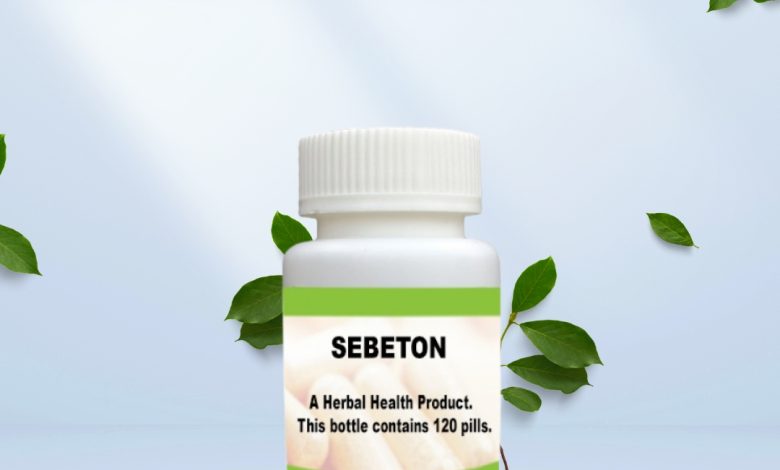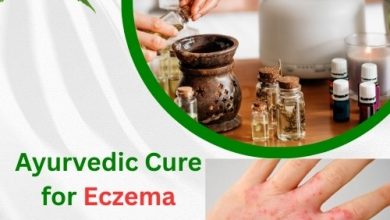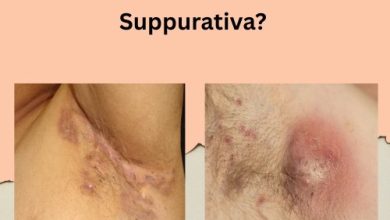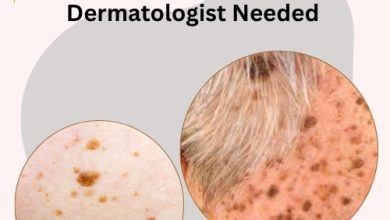Is Seborrheic Keratosis Bothering You? Here’s How Castor Oil Can Help

Seborrheic Keratosis is an extremely common skin condition that can be bothersome and unsightly. It’s estimated that over 80% of people over 60 will develop at least one of these growths. While many treatments are available, Castor Oil for Seborrheic Keratosis is a natural option that may help. Combined with Tea Tree Oil, Castor Oil is believed to help reduce the appearance of these growths. In this blog post, we’ll explore how Castor Oil and Tea Tree Oil can help soothe Seborrheic Keratosis symptoms and offer some tips on using this natural remedy.
What is Seborrheic Keratosis?
Seborrheic Keratosis, also known as Sebeton, is a common skin condition affecting many individuals, especially those over 60. These growths appear waxy, raised bumps on the skin and can vary in colour from light tan to dark brown. While Seborrheic Keratosis is generally harmless and non-cancerous, it can be bothersome and unsightly, leading individuals to seek treatment options.
Castor Oil is emerging as a popular natural remedy for Seborrheic Keratosis. It is believed to help reduce the appearance of these growths, along with Seborrheic Keratosis Tea Tree Oil. Castor Oil is rich in fatty acids and is known to have moisturizing and healing properties for the skin. When applied topically, it may help soothe and soften the growths, making them less noticeable.
Seborrheic Keratosis Home Remedies are gaining popularity as individuals seek out alternative treatment options that are natural and safe. Castor Oil is a versatile and accessible remedy that can be easily incorporated into a skincare routine. By combining it with Seborrheic Keratosis Tea Tree Oil, which has antimicrobial properties, individuals may experience added benefits in managing the symptoms of Seborrheic Keratosis.
In the next sections, we will delve deeper into the causes, common symptoms, traditional treatment options, and precautions of using Castor Oil for Seborrheic Keratosis. We will also explore other natural remedies that can complement the use of Castor Oil in managing this common skin condition. So, if Seborrheic Keratosis is bothering you, keep reading to discover how Castor Oil can help.
Causes of Seborrheic Keratosis
Seborrheic Keratosis, also known as Sebeton, is a common skin condition that can affect anyone, but it is more prevalent in individuals over 60. The exact cause of Seborrheic Keratosis is unknown, but several factors are believed to contribute to its development.
One potential cause of Seborrheic Keratosis is genetics. It is thought that certain genes may make individuals more prone to developing these growths. If you have a family history of Seborrheic Keratosis, you may be at a higher risk of developing them yourself.
Another possible cause is sun exposure. Ultraviolet (UV) rays from the sun can damage the skin over time, forming Seborrheic Keratosis. Individuals who spend much time outdoors without proper sun protection may be more susceptible to developing these growths.
Hormonal changes have also been linked to the development of Seborrheic Keratosis. It is not uncommon for these growths to appear during pregnancy or menopause when hormone levels fluctuate.
Lastly, age itself may be a contributing factor. Seborrheic Keratosis tends to be more common in older individuals, and the exact reason for this is still unclear.
While the precise causes of Seborrheic Keratosis are not fully understood, it is important to remember that these growths are generally harmless and non-cancerous. However, if you have any concerns about the appearance or changes in these growths, it is best to consult a healthcare professional for an accurate diagnosis and appropriate treatment options.
When it comes to managing Seborrheic Keratosis, several traditional treatment options are available. In the next section, we will explore these options in more detail.
Common Symptoms of Seborrheic Keratosis
Seborrheic Keratosis, also known as Sebeton, can manifest itself in various ways, with common symptoms. These growths appear as raised bumps on the skin, often waxy and with a rough texture. The colour of these growths can vary, ranging from light tan to dark brown. One key characteristic of Seborrheic Keratosis is its non-cancerous nature. They are generally harmless but can cause distress due to their unsightly appearance.
Seborrheic Keratosis can be found on various body parts, including the face, scalp, chest, back, and shoulders. While the growths are usually painless, they may become itchy or irritated, leading individuals to seek treatment options. Other symptoms of Seborrheic Keratosis include a gradual increase in the number of growths over time and their enlargement in size.
If you are bothered by the appearance of Seborrheic Keratosis and wish to explore natural treatment options, Castor Oil may be an ideal solution. Castor Oil is gaining recognition as a Seborrheic Keratosis Home Remedies for managing these growths. When applied topically, it may help soften and reduce the appearance of Seborrheic Keratosis. You can proactively manage this common skin condition by incorporating Castor Oil into your skincare routine. Additionally, other Seborrheic Keratosis Home Remedies can complement Castor Oil, providing a holistic approach to symptom management.
Stay tuned to discover more about traditional treatment options, how to use Castor Oil for Seborrheic Keratosis, precautions and side effects, and other natural remedies that can offer relief from these growths. Don’t let Seborrheic Keratosis hold you back from feeling confident in your skin – natural solutions help you manage it effectively.
Traditional Treatment Options for Seborrheic Keratosis
When it comes to managing Seborrheic Keratosis, several traditional treatment options are available. These options can vary depending on the severity and location of the growth.
One common treatment option for Seborrheic Keratosis is cryotherapy, which involves freezing the growths with liquid nitrogen. It can help remove the growths and reduce their appearance. Another option is electrocautery, which uses an electric current to burn off the growths. It can be an effective method for smaller, raised growths.
Other treatment options include curettage, which involves scraping off the growths with a surgical tool, and laser therapy, which uses high-intensity light to destroy the growths. A dermatologist typically does these procedures and may require local anaesthesia.
While these traditional treatment options can be effective, they may have risks and side effects. Some individuals may prefer to explore natural remedies such as Castor Oil for Seborrheic Keratosis. Castor Oil is a versatile remedy rich in fatty acids and has moisturizing and healing properties for the skin. Combined with Seborrheic Keratosis Tea Tree Oil, it is believed to help reduce the appearance of these growths.
In the next sections, we will explore how Castor Oil can be used as a natural treatment option for Seborrheic Keratosis, how to use it properly, and the precautions and side effects to be aware of. Additionally, we will discuss other natural remedies that can complement the use of Castor Oil for managing this common skin condition. Stay tuned to discover the best solutions for soothing your Seborrheic Keratosis symptoms.
Castor Oil as a Natural Treatment Option for Seborrheic Keratosis
Seborrheic Keratosis, also known as Sebeton, can be bothersome and unsightly. Thankfully, natural remedies, such as Castor Oil, may help reduce the appearance of these growths. Castor Oil is rich in fatty acids and has moisturizing and healing properties for the skin. When applied topically, it can help soothe and soften the growths, making them less noticeable.
Castor Oil for Seborrheic Keratosis is gaining recognition as a popular Seborrheic Keratosis Home Remedies. Many individuals are turning to Seborrheic Keratosis Home Remedies to seek natural and safe treatment options. Castor Oil is a versatile and accessible remedy that can be easily incorporated into your skincare routine. Combined with Seborrheic Keratosis Tea Tree Oil, which has antimicrobial properties, it may offer even greater benefits in managing the symptoms of Seborrheic Keratosis.
If you’re bothered by the appearance of Seborrheic Keratosis and want to explore natural treatment options, Castor Oil may be the solution you’re looking for. In the next sections, we’ll discuss how to properly use Castor Oil for Seborrheic Keratosis, the precautions and side effects to be aware of, and other natural remedies that can complement the use of Castor Oil in managing this common skin condition. Stay tuned to discover the best ways to naturally soothe your Seborrheic Keratosis symptoms.
How to Use Castor Oil for Seborrheic Keratosis
If you’re considering using Castor Oil for Seborrheic Keratosis, it’s important to know how to use it properly for optimal results. Here are some steps to follow:
- Choose a high-quality Castor Oil: Look for a cold-pressed, organic Castor Oil to ensure its purity and effectiveness. This type of oil retains more of its beneficial properties.
- Cleanse the affected area: Before applying Castor Oil, cleanse the area with a gentle cleanser to remove any dirt or impurities.
- Apply Castor Oil directly to the growth: Using a clean cotton ball or a Q-tip, apply a small amount of Castor Oil directly to the Seborrheic Keratosis growth. Gently massage the oil into the skin for better absorption.
- Leave it on overnight: For best results, leave the Castor Oil on overnight. You can cover the area with a bandage or gauze to prevent it from rubbing off on your clothes or bedding.
- Repeat daily: Consistency is key when using natural remedies. Repeat the process daily until you see an improvement in the appearance of the growths.
Individual results may vary, and it’s important to consult with a healthcare professional if you have any concerns or questions. While Castor Oil has shown promise in managing Seborrheic Keratosis, it’s always best to take a holistic approach to skincare and consider other natural remedies that can complement its effects.
Precautions and Side Effects of Using Castor Oil for Seborrheic Keratosis
While Seborrheic Keratosis Castor Oil is generally considered safe for topical use, there are a few precautions and potential side effects to consider when using it for Seborrheic Keratosis.
Firstly, performing a patch test before applying Castor Oil to a larger skin area is important. It can help determine your allergies or sensitivities to the oil. To do a patch test, apply a small amount of Castor Oil to a small skin area and wait 24 hours to see if any irritation or adverse reactions occur.
Additionally, Castor Oil can be quite thick and sticky, which may make it difficult to spread evenly over the affected area. Applying only a small amount of oil is important to avoid clogging the pores or exacerbating the condition. If you experience any discomfort or skin irritation, discontinue use immediately.
Furthermore, Seborrheic Keratosis Castor Oil is not recommended for broken or infected skin use. If you have open sores or wounds near the Seborrheic Keratosis growths, avoiding Castor Oil until the skin has healed is best.
Lastly, it’s important to note that while Seborrheic Keratosis Castor Oil may help reduce the appearance of Seborrheic Keratosis, it may not eliminate it. If you have concerns about the growths or if they change in appearance, size, or texture, it’s essential to consult with a healthcare professional for proper diagnosis and advice on treatment options.
Remember, each individual may react differently to Seborrheic Keratosis Castor Oil, so it’s important to listen to your body and discontinue use if you experience any adverse reactions.
Other Natural Remedies for Seborrheic Keratosis
While Seborrheic Keratosis Castor Oil is a popular natural remedy for Seborrheic Keratosis, other natural remedies can also be beneficial in managing this common skin condition. One such remedy is apple cider vinegar. Apple cider vinegar is known for its antimicrobial properties, which can help reduce the appearance of Seborrheic Keratosis. A cotton ball or swab can be applied topically to the affected areas.
Another natural remedy to consider is aloe vera gel. Aloe vera has soothing and moisturizing properties that can help relieve any itching or irritation associated with Seborrheic Keratosis. It can be applied directly to the affected areas daily for best results.
Green tea extract is another option to consider. Green tea contains antioxidants that can help reduce inflammation and promote healthy skin. Applying green tea extract topically or drinking green tea regularly may help improve the appearance of Seborrheic Keratosis.
Lastly, turmeric paste is another natural remedy that may effectively manage Seborrheic Keratosis. Turmeric has anti-inflammatory and antioxidant properties that can help reduce the appearance of these growths. Mixing turmeric powder with water to form a paste and applying it to the affected areas may help soothe and soften the growths.
While these natural remedies may offer relief and improve the appearance of Seborrheic Keratosis. It’s important to consult with a healthcare professional before trying any new treatment. They can guide and ensure the chosen remedies suit your specific condition.




